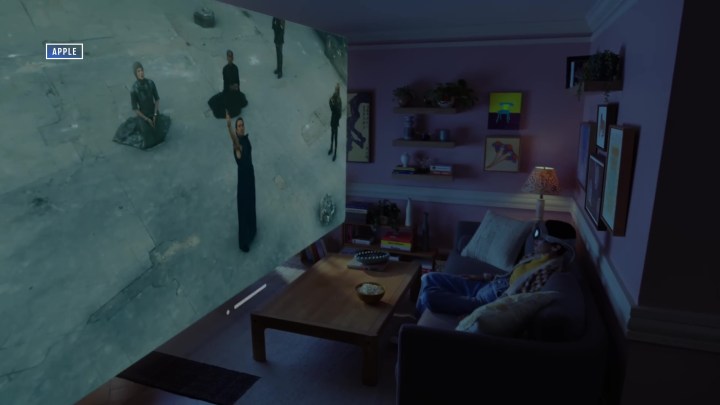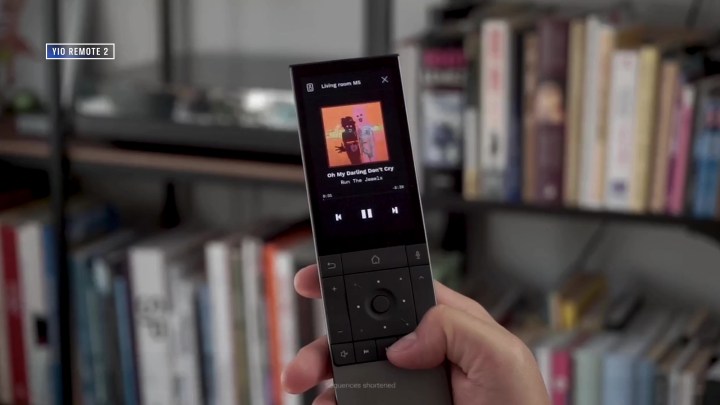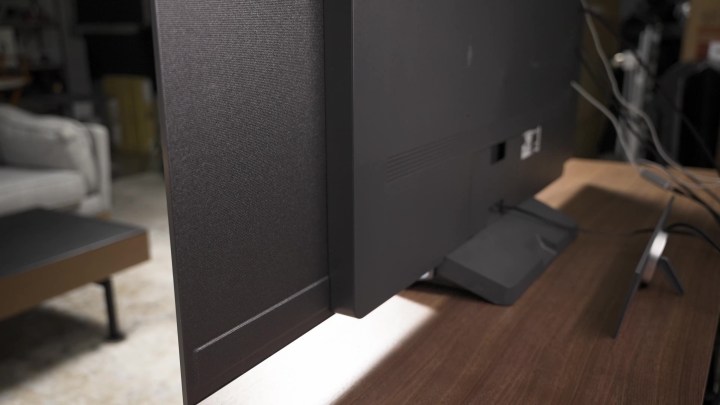In this installment of You Asked: How can you determine if you’re getting 4K or HDR on your TV? Why is Dolby Atmos music so hard to get? Are there any decent Universal remotes anymore?
Remote shortcuts for input formats

John Engstrom writes: Just got a Sony X90L and was wondering how to get the TV to show me the resolution and the format of the input signal (HDMI or streaming app). Is there a button on the remote that will show me that info, or possibly somewhere in the menu? I haven’t found it yet, but it seems like it has to be there somewhere.
You would think that button or menu item exists because those kinds of buttons and info screens used to be fairly common! But to the best of my knowledge, it does not. At least not on Sony TVs. And honestly, anecdotally, I feel like most TV manufacturers have stopped making that kind of information available — or if they do, it’s buried deep in a menu somewhere.
As with all things tech, though, there sometimes are hacks we can use to figure it out. Or at least give ourselves some assurances that we’re getting the signal we want. One of them involves having an AV receiver that reads the EDID — that’s short for extended display identification data — and provides that info. Or you could spend thousands on devices like the ones Murideo makes for video professionals. I’m assuming you’re not interested in any of that.
So, for the format — SDR, HDR, HDR10, HDR10+, Dolby Vision — the best way to find out what you’re getting is to click the Wrench icon on your Sony remote, then click Picture and sound, scroll down to Picture and click that and then look in the upper right. If it’s HDR, it will say HDR; if it is Dolby Vision, it will say so up there. If it’s SDR, it will say nothing.
As for resolution, I don’t have anything for you there. If you’re on YouTube, you can check the resolution and even force it to the one you want by clicking up, then on the settings cog icon, and selecting the resolution. Then, there are the stats for the nerds section, which is also available on YouTube TV and can be accessed if you scroll down a bit further. This will tell you the resolution, the codec in use, the color space, your connection speed, etc.
Sometimes, apps will give you some control over the default video resolution you get. For instance, you can sign into your Netflix account on its website, click Account, click on your Profile icon, then scroll down to Playback settings, and choose High (as opposed to Auto). This makes it so you may get some buffering at first, but Netflix will play at the highest available quality. (Assuming you have the plan that supports 4K.) It’s not a great idea if you have bandwidth caps. And often, 1080p HDR can be indiscernible from 4K HDR when all other factors are equal. But I digress — each streaming service is different.
But this reminds me of something I really like about LG’s TVs: They have a graphic that pops up when you start watching content that tells you quite clearly what the format is, even if it doesn’t tell you the resolution. TCL does so, too.
Anyway, I hope that is of some help. I’ve reached out to Sony to find out if it will share any secret tips on how to access this info on its modern TVs. I’ll update this post if I get a response.
Why is it so hard to get Atmos music

Richie writes: I recently bought an Onkyo AVR and some new ceiling speakers, and I thought I could be up and running with Dolby Atmos music. But it wasn’t that easy. I thought because my receiver has Tidal built in, it would work easily. But, no. I have a Roku Ultra with the Tidal app, and it won’t work. Long story short, I had to buy an Apple TV in order to get Dolby Atmos music to work! Why is it so hard to get Dolby Atmos music to work? Especially since Dolby Atmos support seems to be everywhere! I feel like with phone “casting” and Airplay, it should be easy.
What’s the deal with Atmos music being so hard to listen to?
What can I say but I know, right? It’s kind of ridiculous. Apple, Tidal, and Amazon Music Unlimited all offer Atmos Music as a feature. You would think any device with apps for those services would offer the full suite of features. But they don’t. Not even close. I can understand if, say, the Tidal app in an AV receiver is just not powerful enough to be coded to coordinate with Tidal in a way that authorizes and receives the Atmos Music encoded stream. OK. But, when you’re talking about Roku and Google TV/Android TV platforms, where the devices that run those platforms are super powerful, I think it should be a no-brainer.
I think the reason why, say, the Tidal app on Roku doesn’t work for Atmos music is probably a little different from why the Tidal App on an Amazon Fire TV Cube might not work. I can also see Amazon keeping its best features for its own hardware. But at the end of the day, as consumers, we don’t care, right?
This is one more reason I recommend the Apple TV box. It is, consistently, the one device and platform where the most amount of stuff just works. It requires the least amount of workarounds. It’s just the safest bet. And I think all that counts for a lot in the consumer electronics market. (It’s also not that much more expensive than the other manufacturers’ top products.) If you can get Atmos music over Wi-Fi using the Sonos app controlling a Sonos Atmos sound system, but you can’t get the same experience using a Samsung Atmos soundbar with a Samsung TV without jumping through a bunch of hoops — well, I can understand why folks might pay more for Sonos. I think folks are willing to pay a premium for fewer hoops, fewer questions, and fewer frustrations.
Anyway, I’m sorry getting Dolby Atmos music is hard. And I think it is dumb when getting Dolby Atmos for movies and TVs is, at least relatively speaking, so incredibly easy now. It’s stupid, and I hate it, too.
Is VR the home theater of the future?

Chad asks: What are the pros and cons of using an Apple Vision Pro as a home movie theater instead of buying a large projector, Dolby surround sound, etc? Is it possible that this is the home theater of the future? Can this approach be cheaper and better quality than what the traditional home movie theater offers?
I think the Apple Vision Pro will provide amazing picture quality. I mean, if the pixel density is right, we’re talking about close-range video where no light intensity is lost over long distances and perfectly controlled ambient light levels. In other words, total darkness. So, the Vision Pro could offer the ultimate HDR video experience. And through noise-canceling, computational audio-enabled Apple Airpods Pro or AirPods Max, we already know we can get an incredible Dolby Atmos and spatial audio experience. The quality will probably be outstanding.
Here’s the thing, though. This is the one thing that will prevent the Apple Vision Pro from ever meaningfully competing with a home entertainment space. That little Apple Vision Pro home theater? It’s a theater for one. You’re all by yourself.
Now, there’s nothing wrong with enjoying content on your own! In fact, it sounds awesome in some instances. But, just like watching a big sporting event with friends or in a crowd is often more exciting and, to some, more meaningful than watching alone, so too is watching movies and TV. There’s something awesome about experiencing a movie together with friends or family. Speaking personally, some of my favorite life memories come from those shared experiences.
Apple Vision Pro will never be able to fully replace those shared experiences. Sure, maybe you can look to your left and right and see avatars or even real-life representations of your friends or family. Maybe you’ll even be able to hear them if Apple integrates voice audio among participants — I’m betting it’ll do just that. But that kind of experience will never be the same or as meaningful as observing the same space together.
So, a supplement to a conventional home entertainment rig? For sure. A replacement? No chance.
Universal remotes

Ben writes: Are there any universal remotes you recommend to control all the devices in a setup, such as an AVR, TV, Blu-Ray player, and Apple TV? I seem to recall them being fairly popular a couple of years ago, even being capable of controlling smart TVs and smart devices like the Apple TV 4K. In your opinion, is there any good way to get around the rigamarole of juggling 3 different remotes just to watch one show, or is that a lost battle?
Frankly, I am not aware of any decent universal remotes. However, there is a Kickstarter project by Martin Borzak, which he calls Yio. Please note that I am not endorsing this until I have vetted it further.
Nobody has swooped in to fill the void that Logitech left when the Harmony universal remotes were discontinued. Yes, some killer remotes are available for integrated systems, like those made by Control4, Savant, Crestron, etc. But consumer-level remotes like the Harmony brand no longer exist. I mean, Wirecutter’s top pick is the Sofabaton, and that’s number one out of two remotes, which I think tells us plenty.
Why did Logitech get out of Universal Remotes? I’ll ask. Logitech has headquarters across the river from me for its UE division. But I suspect it is because sales declined as HDMI CEC implementation — even though it is buggy and problematic — allows us to control multiple devices with one remote. I can control a TV, Blu-ray player, Apple TV, and even some PS5 features with one remote just through HDMI CEC.
I think this pushed universal remotes to the margins. Once again, we enthusiasts find the big-box consumer electronics space a very lonely one indeed. Which, if I had to guess, is why Marton Borzak is doing his thing.
TVs with built-in Dolby Atmos speakers

Jaimi Martinez Gomez writes: I went to a store, and the guy at the store told me that the LG C3 has Dolby Atmos Built speakers, and when I heard it, it didn’t sound precisely as Dolby Atmos. I just want to know if they are telling me the truth or if there’s any TV with Dolby Atmos built-in speakers.
Because I also had the opportunity to try the A80L and the acoustic surface audio was amazing, but I think that it isn’t Dolby Atmos either.
Here’s the deal: Dolby has decided to license the Dolby Atmos name to technologies that, in my opinion, do not really deliver what I think most folks familiar with Dolby Atmos are expecting. I love Dolby. I love the people there. I love Dolby Atmos. I love Dolby Atmos Music. I have some really awesome things to say about Dolby Flex Connect in a post coming out soon.
But (and I understand this is maybe a smart business decision) I hate, hate, hate that Dolby Atmos as a technology and brand has been so watered down to the point that a TV with some tiny, dinky speakers that don’t really deliver anything remotely close to high-quality sound is getting the Dolby Atmos badge. I mean, call it Dolby Audio or something else. Dolby is still a flex in the audio world. You can convey this TV has better than average sound quality by saying it has Dolby on-board sound. You don’t have to use Dolby Atmos for that.
If it were up to me — and Dolby is probably just fine with it not being up to me — I would not slap the Dolby Atmos badge on any TV outside of just advertising that it supports Dolby Atmos. Saying the speakers built into any TV deliver a meaningful Dolby Atmos experience is, I think, disingenuous and weakens the brand.




